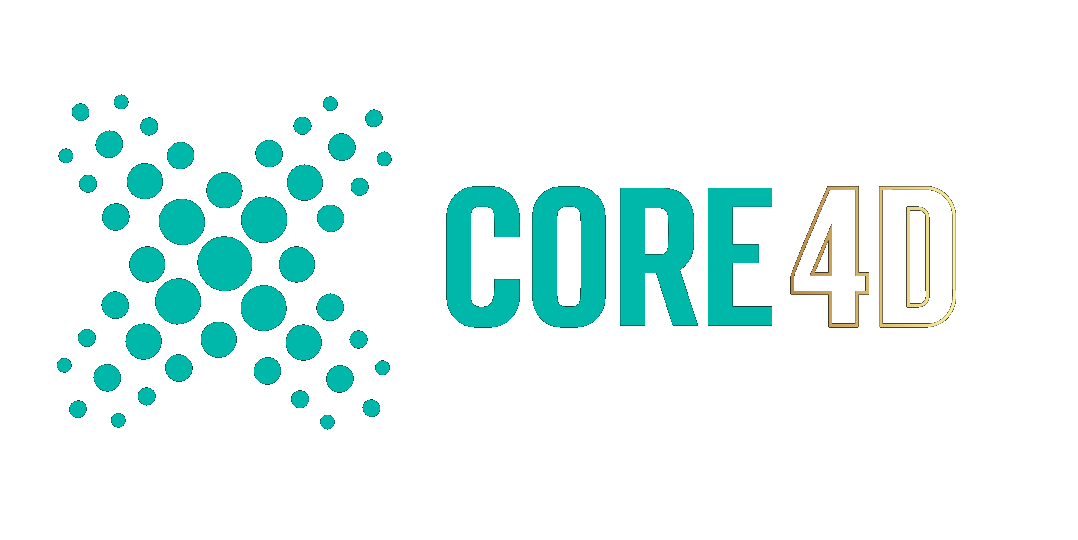Leaderboard
Popular Content
Showing content with the highest reputation since 07/14/2025 in Posts
-
i think there is a clean up happening in the process. like if only one point has two shared edges. try to triangulate your mesh then import again.1 point
-
@dasfrodo Dominik Ruckli has released in Gumroad for free a ScenerNodes tool that does exactly that a few weeks ago1 point
-
1 point
-
Looks pretty slick. AI agent, advanced brush for vegetation, AI PBR materials, IES control, etc.1 point
-
1. Change from icon to list view 2. Click on the Fold button next to home Should get you something like1 point
-
No reason you couldn't make this work with a material blender and a combination of state, ramp and curvature nodes. You'd have to do it on a per-object basis (so not as slick as the one in Unreal) but it is doable.1 point
-
Since I am reworking my old project from so many years ago… I thought I would show peeps here the rework on the tower roof of peg's mansion so that you can compare the old one with the new one - I like to think it is an improvement… Whilst I am at it perhaps someone might tell me how I might add a dirt map to the tiles collectively since each of the roof tiles is an individual tile but cloned which took quite a while to create but looks so much better.1 point
-
Thank you Donovan for looking. Ended up going in a little different direction but found I could do all I needed by using a scaling plain effector with a falloff field and then using the rendered result of that as a texture map which then could be manipulated further. Long story short I didn't need it exactly as described but in the end was able to do everything I needed with incredible efficiency. This is what we landed on in the end. Model is of a triangle diatom.1 point
-
1 point
-
Wetmaps: I created a vertex map in field mode on the dinosaur and put the liquid mesher (with a bigger voxel size so it renders faster) into the field list. In the field settings, the mesher was set to volume, and I put a decay field on top with 100% so it stays wet where it has been touched by the mesher. I rendered the vertex map just as black/white mask, so I could use it in comp to darken the original render. Additionally, I rendered a seperate, very reflective pass of the dinosaur, that I added on top in comp, again using the wetmap as mask. trex_water_v007_Wetmap.mp4 I then comped everything together in Nuke. I tried to make a smooth transition between the simulated area around the dinosaur, and the rest of the lake, but that was a bit of a challenge and didn't work out to my full satisfaction...it's still noticeable that the simulation doesn't spread out to the rest of the lake. Some final thoughts: AFAIK, our liquids solver is an SPH solver, which is generally designed for small-scale fluids. FLIP would probably be better suited for fluids of that scale. I find it even more impressive that the new solver is capable of pulling this off. It's also very speedy and very stable. Fully art-directable as it works with all the forces, all other simulation types and all the particle modifiers. I enjoyed that little project.1 point
-
Here are some insights from that little project: Easy things first. I reused the animation from my T. rex museum breakout: The environment is an HDRI from the asset browser. The lake (or river) is just a reflective plane with animated noise, and a gradient in the opacity channel to fade it softly into the backplate HDRI. The trickier part was the simulation, naturally. I wanted to simulate only the top layer of water, and I needed to figure out a way to only simulate particles in the area around the dinosaur. A whole lake would have been way too many particles of course. At first I tried to simulate it only in a "pool" that was a bit bigger than the T. rex, using the liquid fill emitter. It worked, but I had visible splashes at the border of the pool - unfortunate if you want the transition between simulation and the rest of the lake as seamless as possible. Instead of walls, I then gave the pool a slightly rising floor towards the edges. That helped mitigating the splashes at the border. However, I still had the problem that the liquid spreaded out pretty fast and drifted away from the dinosaur, where I actually wanted it to be. The beauty of the new liquids is that they work so seamlessly with the rest of the particles system: I could just use an attractor force in the center of the dinosaur. With the right settings, it helped keeping the particles near the T. rex, while still allowing it to act like a liquid. Here's the cached particles with the collider geo: trex_water_v007_Viewport.mp4 The sim contains 3.7 million particles. I used the liquid fill emitter with a radius of 0,7 cm. Sim time was IMHO very reasonable on my RTX 4090, around 20 mins for 150 frames. I would have liked to simulate even more particles, but when I lowered the radius to 0,6 cm (= 6 million particles), I didn't even see the first frame after waiting for several minutes, so I quit that. The cache is 27 GB. I only cached velocity, color and radius, which helped to reduce the size. I then used the liquid mesher with pretty much the default settings, but smaller influence scale, a lot more smoothing and the droplet size set to 10% - that really helps getting rid of those huge blobs that often appear. Here's a clay render, liquid mesh only: trex_water_v007_Clay.mp4 The particle color is mapped to the velocity, which was very handy to fake whitewater. I just remapped the particle color with a ramp to diffuse and reflection strength. The faster the particles, the brighter they are. I rendered them as a separate pass and added it on top in comp. Those particles render crazy fast! A few seconds per frame for 3,7 million particles with motion blur... that was a real joy. trex_water_v007_Whitewater.mp41 point
-
Hrvoje Srdelic is our well known forum member and C4D guru. Always ready to help, often assisting in backend as well, we are truly happy to interview him. There is an understated modest quality about him and dedication put into C4D eco system is well known and recognized. Expert in many areas who helped shape the community for many years. Stuff about you : Former / current workplaces, Achievements, Interests and hobbies 46, married, with a wife, a kid, a mortgage. You could say semi-grown-up 🙂 In 2011, I joined the Maxon beta team and took on the testing role with the same focus, attention, and dedication I had given to my previous jobs and freelancing work. Those efforts did not go unnoticed, and I was offered a position at Maxon, where I continue to work to this day. A highlight of my career was receiving an Academy Award for MoGraph as part of the development team. Apart from 3D, I’ve fully adopted a Mediterranean lifestyle, spiced up with heavy gym sessions and outdoor activities like ziplining, canoeing, and mountain biking. Lately, I’ve been getting into programming, especially nodes. For relaxation, a good book with a good coffee is an unbeatable combo. Q: Describe yourself in a single word Tenacious Q: How did you get into C4D and 3D in general? Back in the 90s, after finishing my education, my first job was at a computer shop. This gave me a solid foundation in hardware and software, which served me well from then on. My next job at a design company sparked what you could call an obsession with 3D. I was captivated by the possibility of virtually constructing my own ideas. The fact that I could iterate and improve creations without real-world constraints was an uplifting experience that fueled endless enthusiasm. Over time, I became proficient in various 3D disciplines. Around 2010, I started freelancing and, after careful consideration, chose Cinema 4D as my main tool. Its simplicity, fast turnaround, parametric nature, and overall stability sealed the deal. As a bonus, I discovered this wonderful forum. I spent a lot of time asking questions and learning. Eventually, I realized I was answering questions frequently, mostly because I felt indebted to the community that helped shape my career. Back then, I noticed a lack of systematic, end-to-end learning materials for C4D, so I took the plunge and created the popular Vertex Pusher series. Q: Which area interests you most? Nodes, MoGraph, and simulations. Q: What other apps are you using and what for? I use various software daily, like GIMP, Camtasia, Vectorworks, and Adobe tools. Q: Which learning resources would you recommend? The CORE4D YouTube channel iis excellent, especially for technical topics. Of course, I have to mention Noseman and the Maxon training channel, wish I had that when I was starting 🙂 In the past, I relied on YouTube with heavy filtering to find quality content. At the time, there wasn’t a single go-to source. Q: Do you think talent is overrated and can be offset with hard work? Yes. Q: Thoughts on AI? It’s just a tool. You can get impressive results without requiring specific expertise, but I don’t see it replacing humans. Q: Tell us something we couldn’t possibly know about you. I’ve also worked in construction and as a lumberjack. At one point, I was also a life guard. Physical work brings me great joy, and my wife often keeps me busy with an endless list of household projects. Q: Top 3 wishes for C4D? I see C4D as a mature platform. It has evolved to the point where users can stay in C4D for most, if not all 3D content creation — unless very specific requirements need to be met. Refining and polishing it as a daily tool, simply progressing on all features and maintaining quality would be high on the list. There are directions I’d personally pursue much further, but they’re likely not what most users would want (remember, I love nodes and technical stuff!). Q: Message for CORE4D? Lately, there has been more content consumption and fewer conversations. With information so readily available, people are engaging less in sharing and talking with fellow artists. I find this counterproductive, as it disconnects people from the most satisfying part of being in a community. I encourage everyone to share their work, start or reply to topics, follow up, show examples, and network. Avoiding these actions is one reason many artists struggle to find gigs or jobs. You managed to model your first object? Rendered your first image? Created your first animation? Share it, and don't be surprised by the positive encouragement you will receive! Q: How can people contact you? I’m easily reachable via PM on this forum.1 point
-
There are known problems regarding bump and rough reflections in Redshift. The most common solution mentioned in the Redshift support forums is to Enable "Legacy Bump Sampling Technique" in the Redshift System settings. Rendertime goes up, though... In any case, please open a support ticket in the Redshift forum. Staff is super nice and knowledgable, and it would help to bring additional awareness to the matter.1 point
-
After Blender got its own Shortest Path Geometry Node last year, many C4D users were anxiously waiting for a counter-move by MAXON. R2023 did not introduce a similar effect but brought an even longer awaited Pyro. Although it is still possible that the Spring release of C4D could introduce its own Shortest Path generator nothing is for certain as MAXON keeps its secrets well hidden (unless Dave McGavran 😜 says otherwise). User 5698024877226 A.K.A Dominik Ruckli, has made his own python plugin and shares it for free here with a SceneNodes particle emitter .1 point




